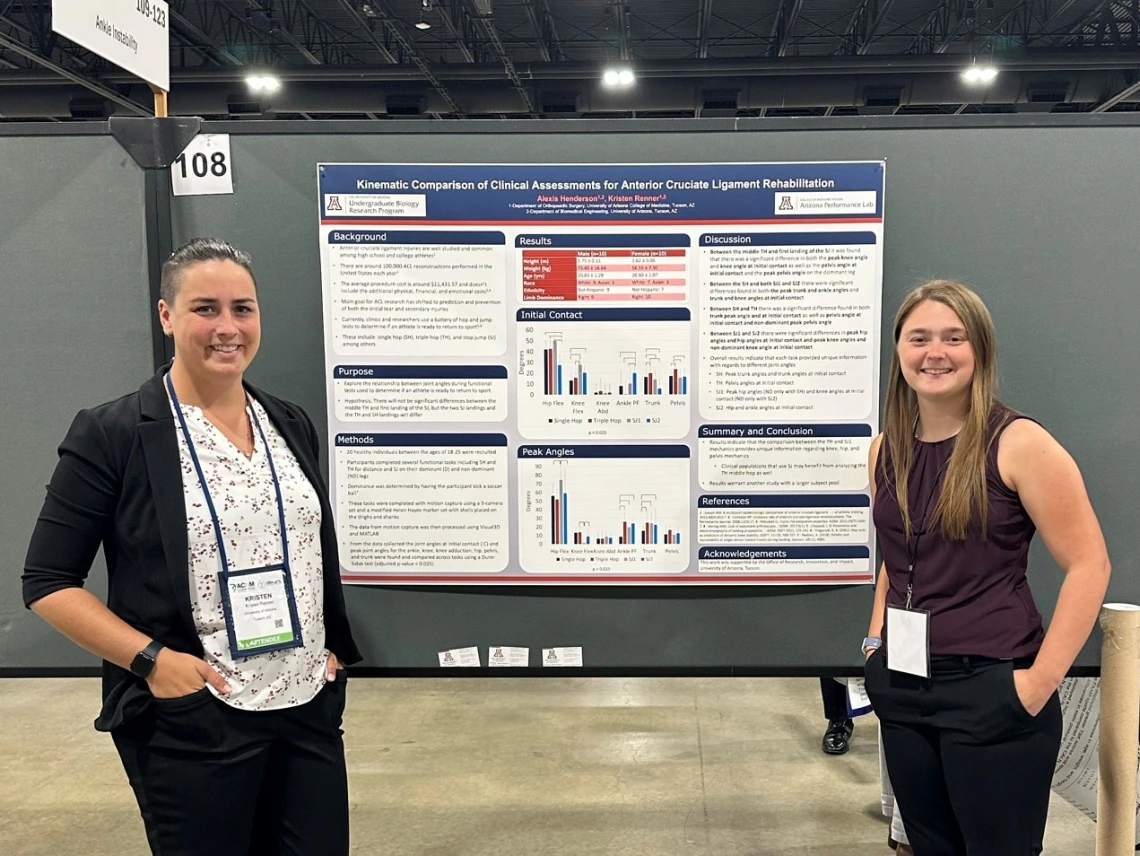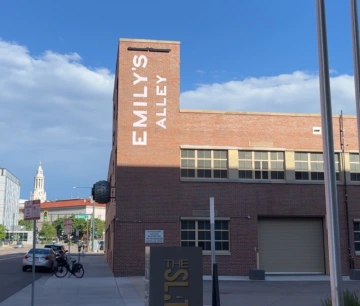A UBRP Student's Experience at the Annual American College of Sports Medicine Conference

In the beginning of June, I had the opportunity to attend the American College of Sports Medicine (ACSM) Annual Meeting. This year’s conference was held in Denver, Colorado.
For me, this was a different experience than the previous presentations I have given for this work at both the UBRP Conference and BME Expo at the University of Arizona. While my previous experiences included a wider variety of topics crossing many fields and areas of study, ACSM gave me the opportunity to present for and speak with individuals who also study sports medicine, and more specifically, sports biomechanics. I had the opportunity to present some of the research that I have completed in the Arizona Performance Lab, directed by Dr. Kristen Renner, that focuses on sports injury risk mitigation, especially when looking at return to sport criteria after anterior cruciate ligament (ACL) injuries. More specifically, my presentation focused on a kinematic comparison of the joint angles of the trunk, pelvis, and lower extremities during four different landings of jumping tasks typically used to determine if an athlete is ready to return to sport. Our research found that each task provided statistically significant unique information on one or more joint angles at initial contact, when the foot first touches the ground, or in the peak angle through the motion. This indicates that both clinicians and researchers should use multiple tasks together, instead of interchangeably or just one, when determining if an athlete is ready to return to sport after an ACL reconstruction.
ACL injuries are very prominent in athletes and was a topic studied by many of the presenters at the conference. This gave me the opportunity to talk to many researchers about what they have studied as well as get their opinions on what further research I should pursue on my topic. In addition, I had the opportunity to speak to researchers who study each system of the body and how it impacts athletes and active individuals, as well as listen to presentations from individuals ranging from other undergraduate students to attendings in orthopaedic surgery and sports medicine. One of my favorite talks presented case studies where medical fellows, residents, and physical therapists presented unique cases on different knee injuries and discussed different measures taken from the initial examination of the patient through the finishing of treatment and the outcomes. Seeing translational work and widening my knowledge of different fields and careers gave me further clarity on what I want my future to resemble, and confirmed the importance I find in continuing research in conjunction with practicing as a physician.

Alexis Henderson
Outside of the conference, I had the opportunity to explore some of downtown Denver. Near the location of the conference, I found Emily’s Alley which was full of different murals and artwork; I would highly suggest taking the moment to walk it if you ever find yourself in that area. I also happened to be in Denver the night of game one of the NBA Finals, in which the Denver Nuggets were competing and ultimately won this year. I really enjoyed watching the city come alive and see all of the support that the locals had for their team. Moments like those are a nice reminder of the importance of the research ACSM exhibits. Sports medicine research is meant to help highly driven athletes at all levels continue to practice what they love in a safe and effective manner, ensure a good physical quality of life, and continue to provide the entertainment and sense of community that sports bring around the world.
One of my mentors once told me that being able to perform good research makes up only 50% of being a good researcher – the other 50% is determined by your ability to effectively share your research with others. I would advise current UBRP students to take every opportunity to present their research to others whenever possible, whether through attending conferences or writing manuscripts. Conferences provide the opportunity to not only share your research but also make connections with others and find a new sense of community that is unique to attending such events. I would like to sincerely thank UBRP, Dr. Renner, and the University of Arizona’s BME department for granting me the funds to attend this conference and take part in an unforgettable experience




